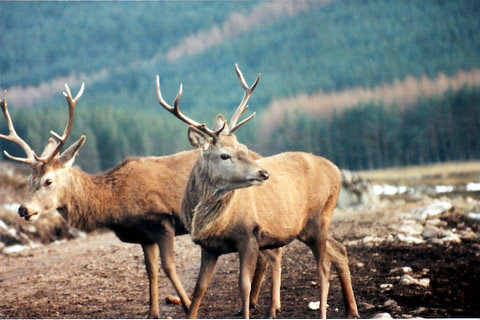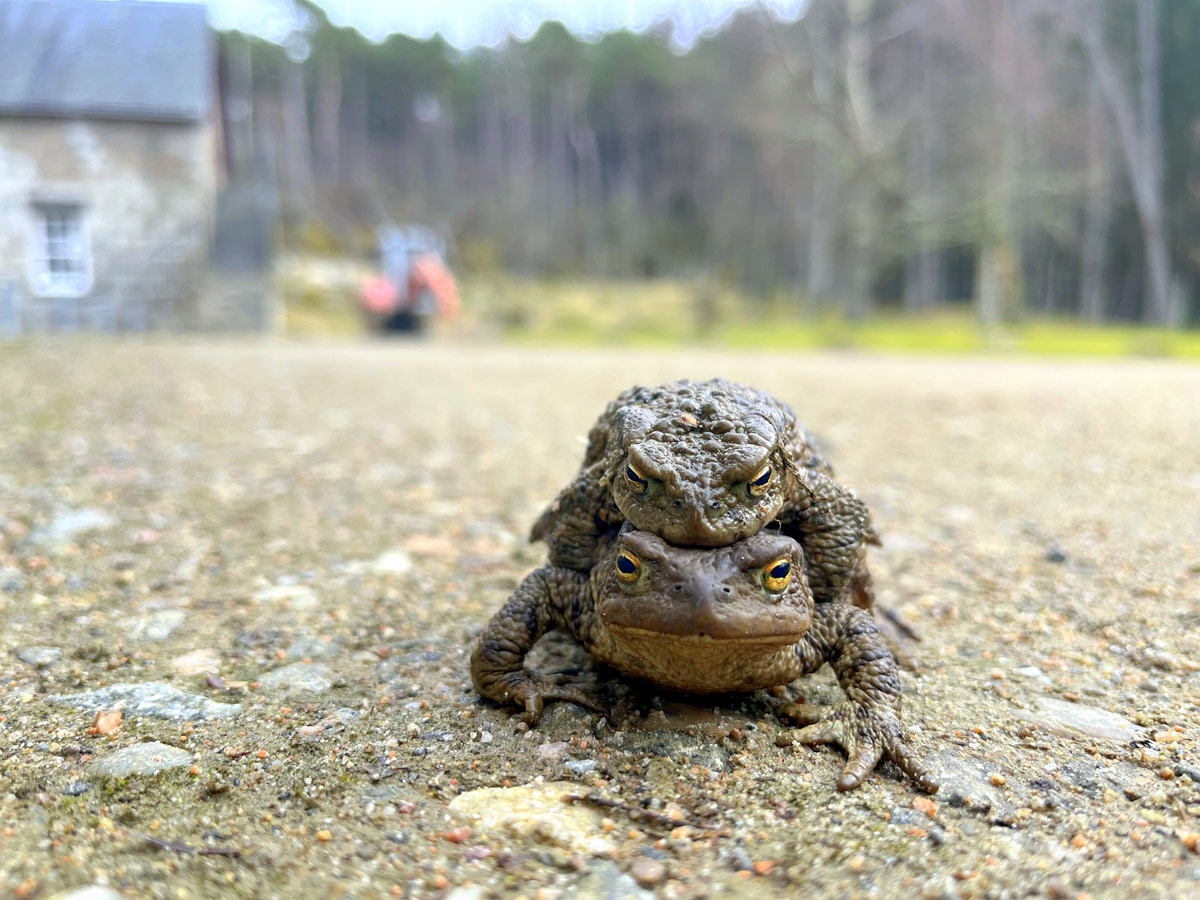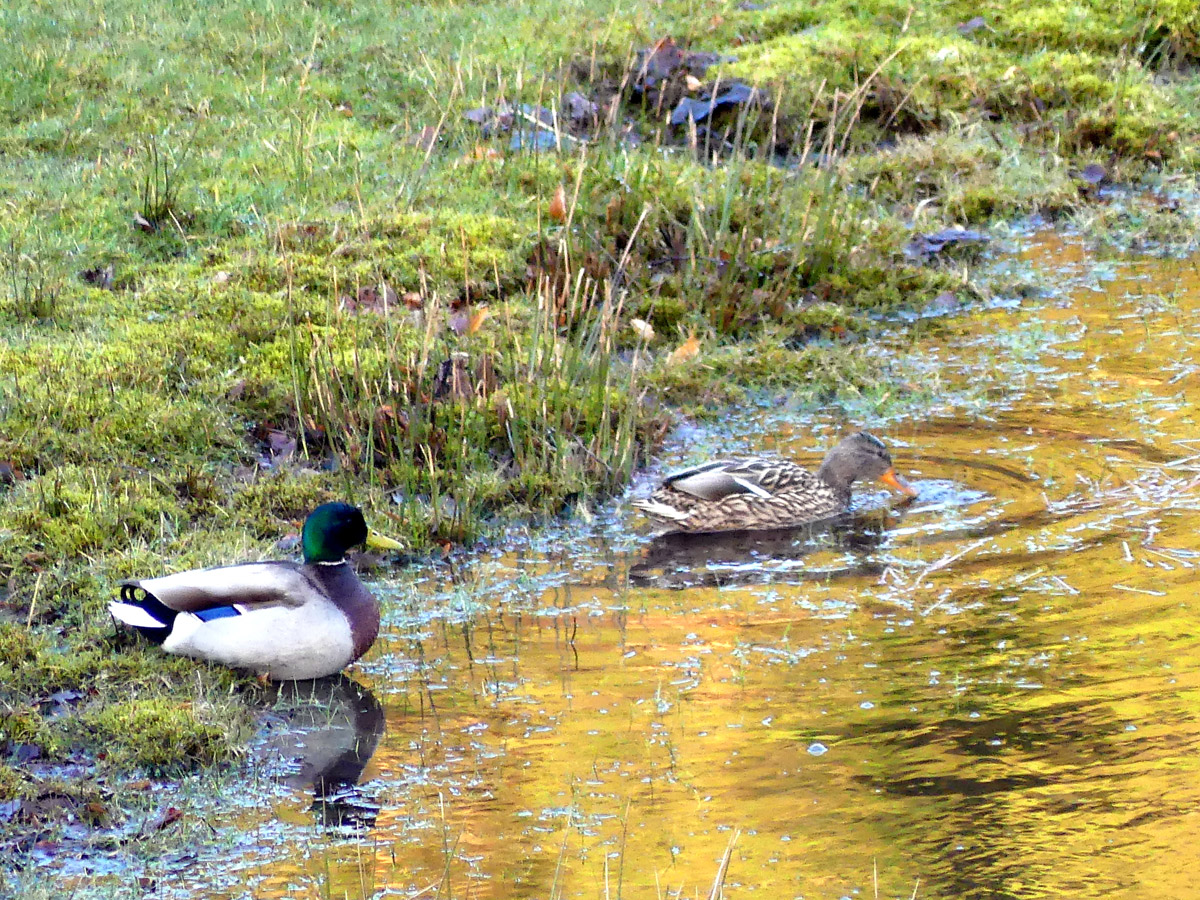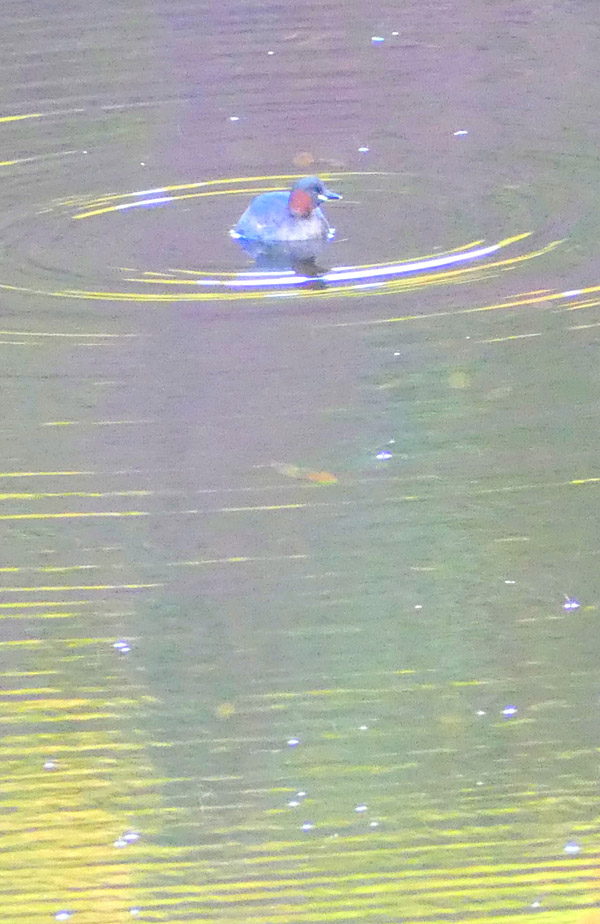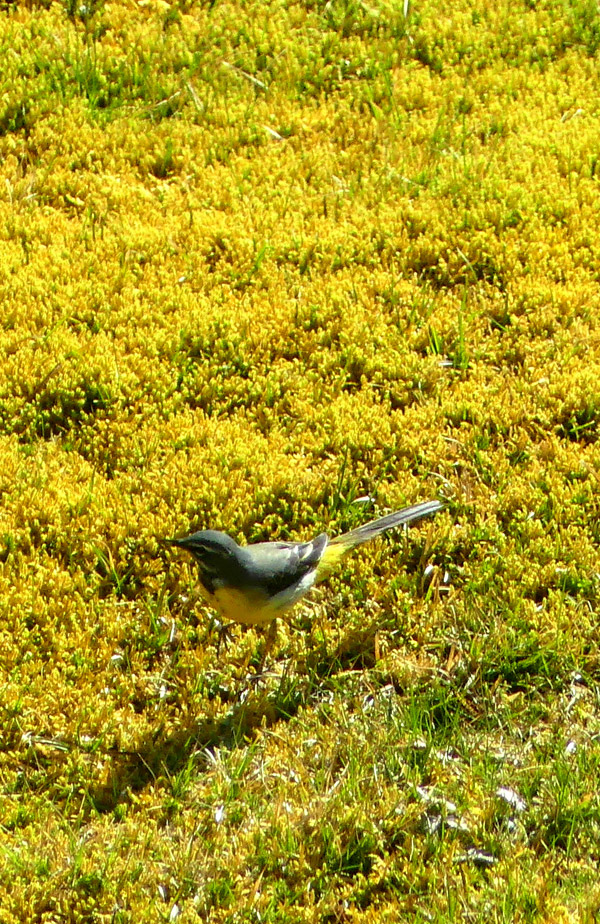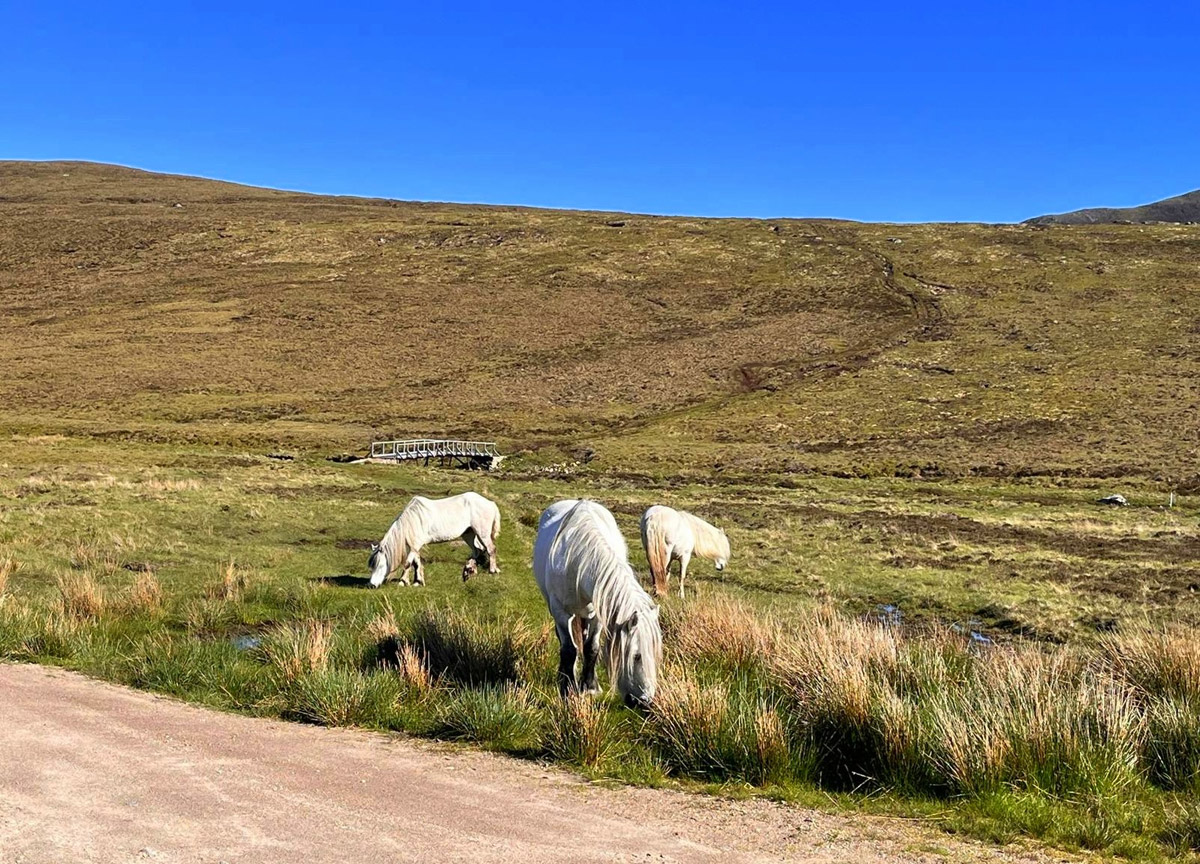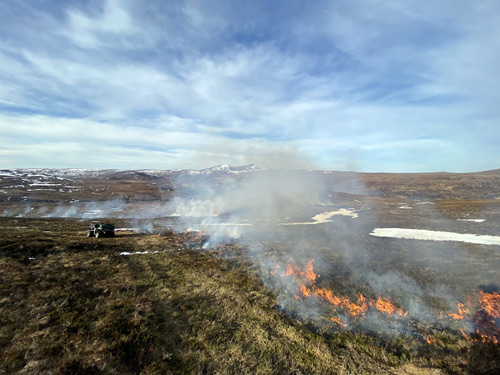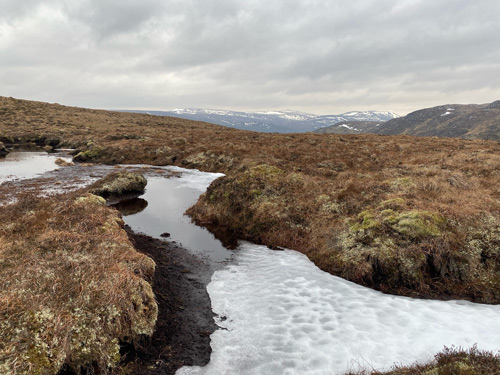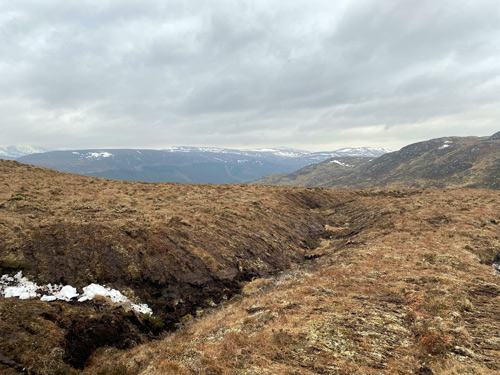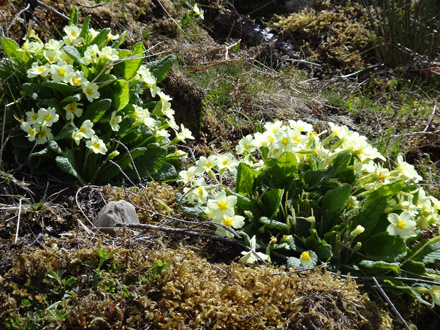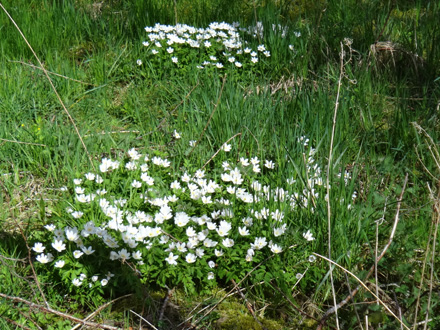This Month at Kildermorie - Archive
Show menuApril
April 2025
During the winter, toads try to conserve their energy, seeking refuge in undisturbed areas of garden and woodland. In spring they migrate to their spawning areas, often en masse, when driving around the estate becomes an exercise in avoidance techniques.
Generally the males arrive first and wait for the females, but often one will see an enterprising male hitching a ride on a female's back - a great source of amusement to the onlooker.
After spawning, the vegetation around the edges of lochs and ponds is host to thousands of eggs laid in long strings, which will hatch into tadpoles after about ten days.
April 2024
In April we are all alert to the arrival of birds not seen since the previous summer. Early arrivals on the inland lochs are the mallard, usually in breeding pairs; this year they are sharing their space with a little grebe - quite distinctive with its rufous coloured neck. Nearby, a grey wagtail with its pale yellow underside and vent investigates the mossy lawn.
April 2023
The garrons work hard during the sporting season, so as soon as weather conditions are suitable, they transfer to alternative grazing ground.
Moving the garrons away from their paddock gives them a more varied diet and leaves them in better condition for the next season's work. They graze the understorey, their hooves break up the soil and they deposit a generous amount of manure, providing the secondary benefit of improving the ground which helps to encourage black game.
In the photo below, they take a break during their walk to one of the fenced tree blocks where they will spend the summer.
April 2022
There is no such thing as a 'quiet season' on an active Scottish estate, as land management continues throughout the year.
Muirburn (left) is the controlled process of burning discrete areas of heather. This serves to eradicate the destructive heather beetle in rank heather, and to promote new growth essential in providing sustenance for young birds; in this way, selective burning allows adjacent areas of longer heather of different ages to be retained to provide on-going shelter for ground-nesting birds. This process can continue till mid-April so long as appropriate weather conditions prevail.
Decades of erosion have adversely affected peatlands across Scotland; damaged peatlands are unable to hold rainwater, thus contributing to flooding after heavy rain, and are unable to hold carbon, which when released into the atmosphere contributes to climate change.
At Kildermorie, steps are being taken to reverse the degradation of these habitats, and peatland restoration is being undertaken. The images below show a typical area of peat before (left) and after (right) re-profiling.
Information about both of these land management topics can be found at www.nature.scot
Photos: S Thompson
April 2021
Heralds of spring - a distant view of whooper swans, taking a break in the early morning sunshine on Loch Bad a' Bhathaich. Though winter residents in some parts of Scotland, they appear on Kildermorie only during their migration to Iceland where they will spend the summer months.
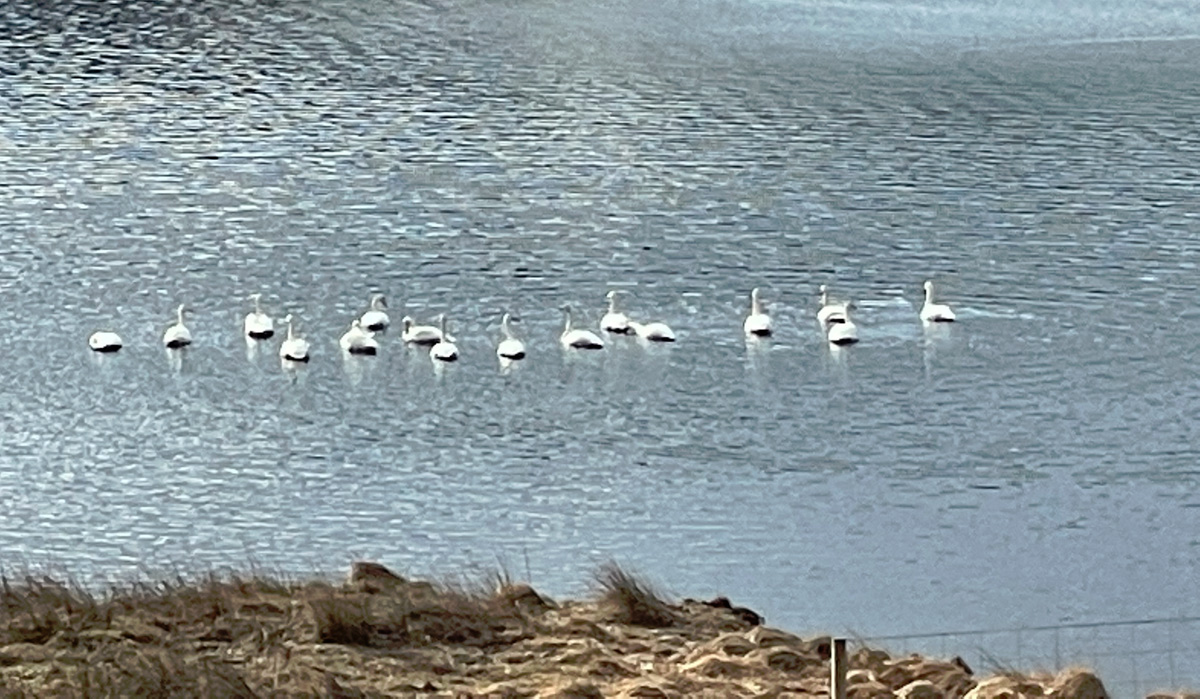
April 2020
This charming dipper, characteristically bobbing up and down, was photographed at the fast flowing River Glasa, swollen by snow-melt from the surrounding hills. However there are still swathes of snow, as those on Meall a Phuill, refusing to acknowledge the end of winter.
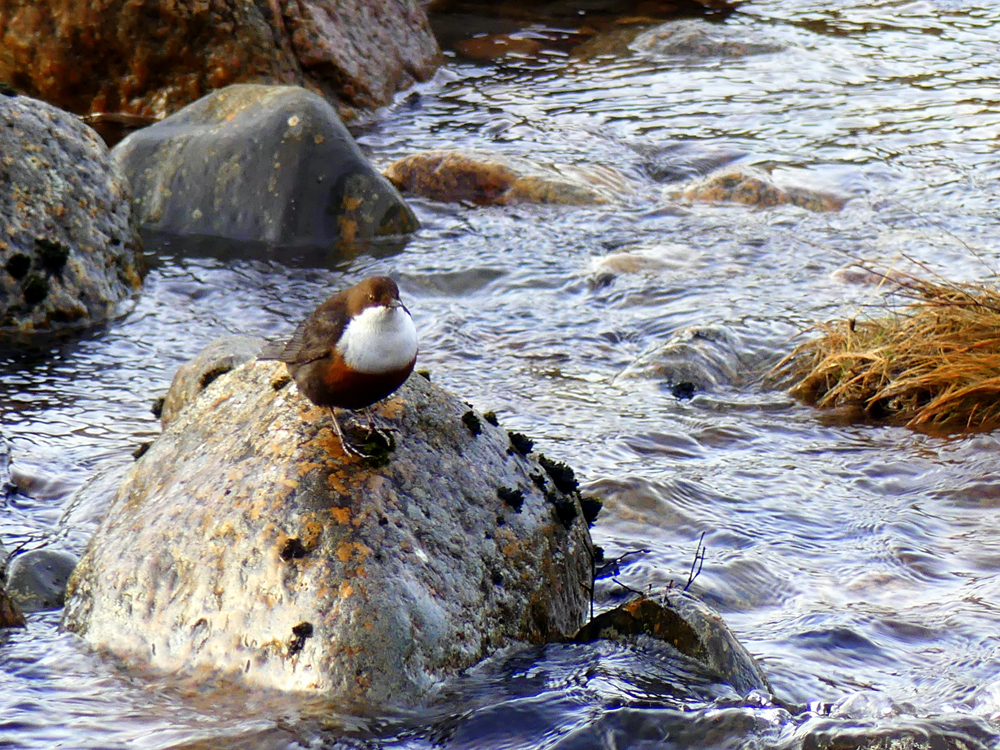 Photo: H Stefankova
Photo: H Stefankova
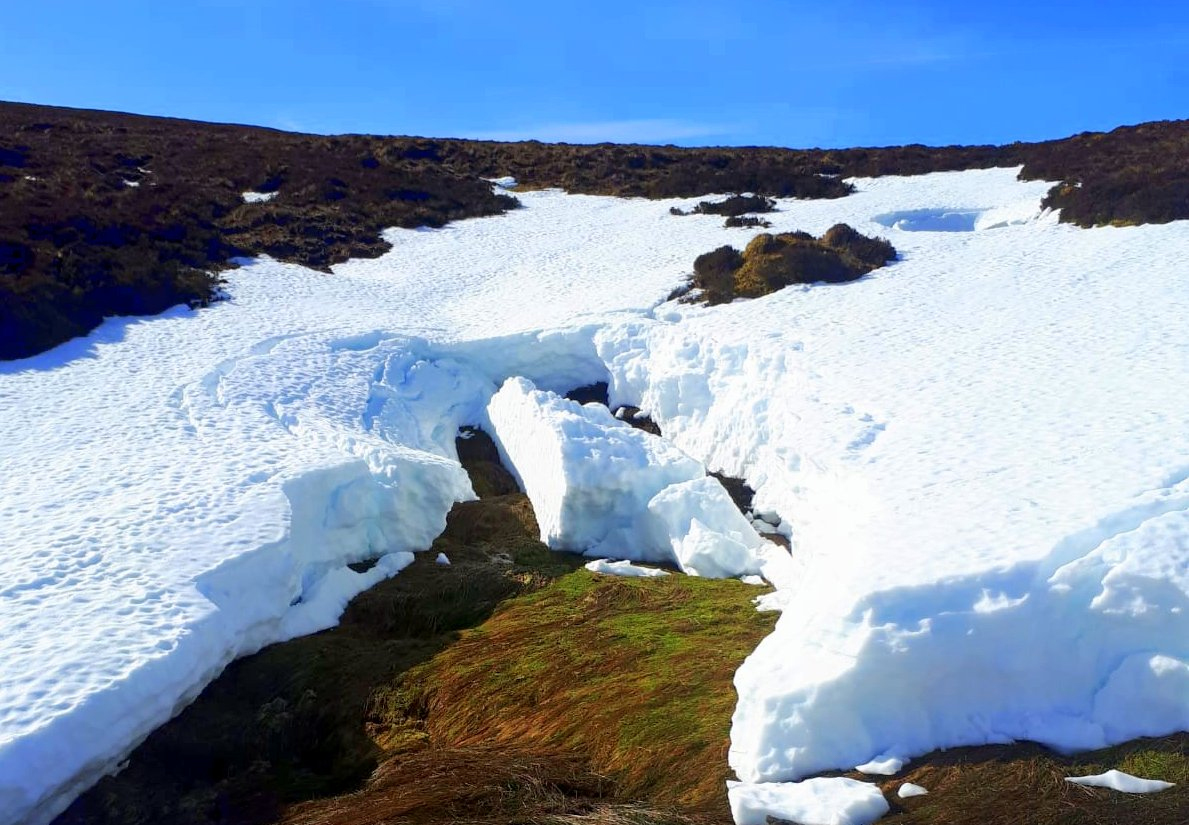 Photo: W Mackay
Photo: W Mackay
April 2019
April is an inspirational month, though it is quite common to experience all four seasons in one day. The appearance of wild primroses and wood anemones in sheltered woodland areas is a welcome sight.
April 2018
Weather folk-law encourages thoughts of an end to winter with the saying "March comes in like a lion and goes out like a lamb"
At Kildermorie, April comes in with alternating snow, rain and sunshine, and sub-zero night-time temperatures. Regardless, pairs of mallard roam around the lochs in search of ideal nesting sites and the chirping of song birds encourages thoughts of warmer weather.
April 2016
April is renowned for being a month of 'sunshine and showers'; in the Scottish Highlands however, it is 'sunshine and lambing snows'.
Close to home, the younger guests enjoy puddle-jumping and hide-and-seek in the woodlands around Meall Mor Lodge.
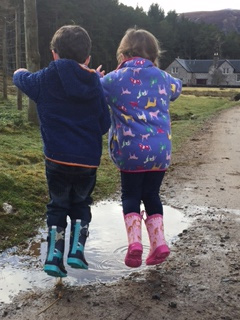
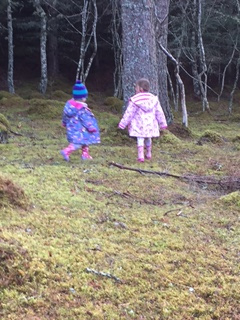 Photos: M-L Bruce
Photos: M-L Bruce
At a greater elevation the adults enjoy the fresh air and spectacular views, or take a turn at the clays near Loch Morie.
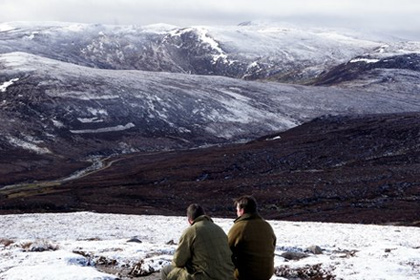 Photo: K Stirton
Photo: K Stirton
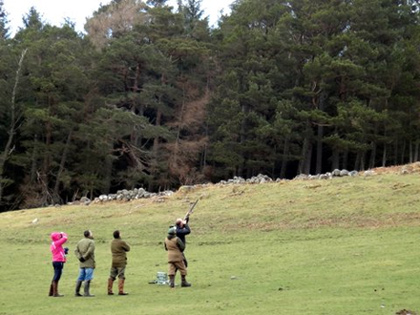
The lambing snows have arrived.
Earlier this month, family groups enjoyed the sunshine sitting on the beaches at the head of Loch Morie; today the beaches are covered in snow. The four images below were captured early on the morning of April 26th.
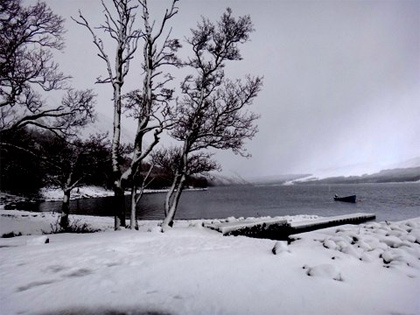
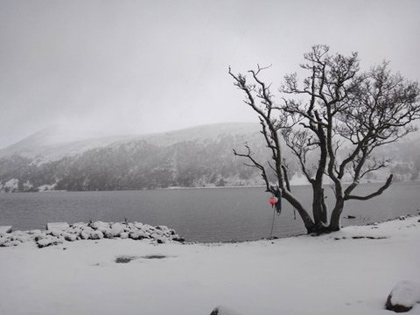
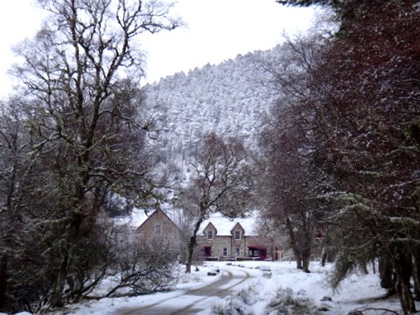
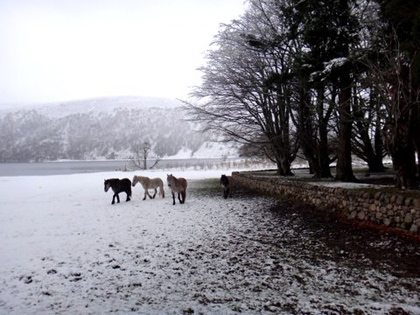
April 2015
At the beginning of April, Whooper swans make their annual stopover on Loch Bad a' Bhathaich during their flight to their breeding grounds in Iceland.
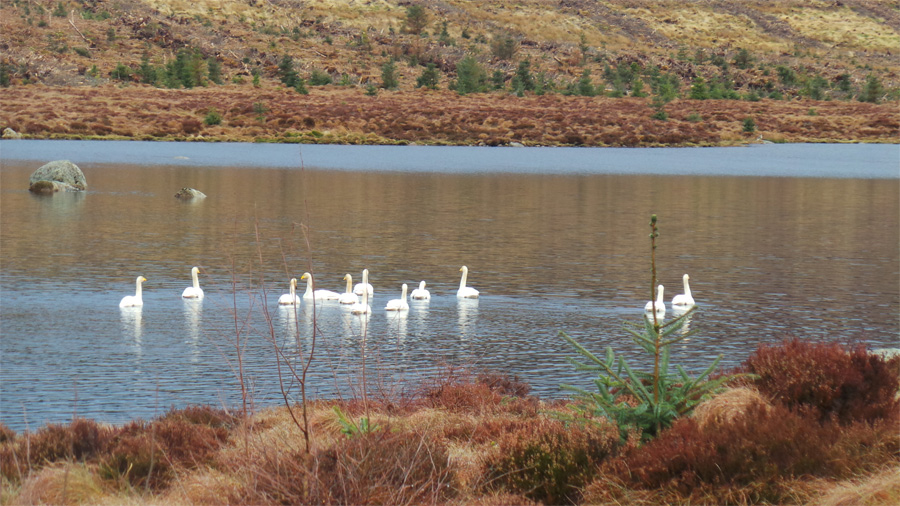
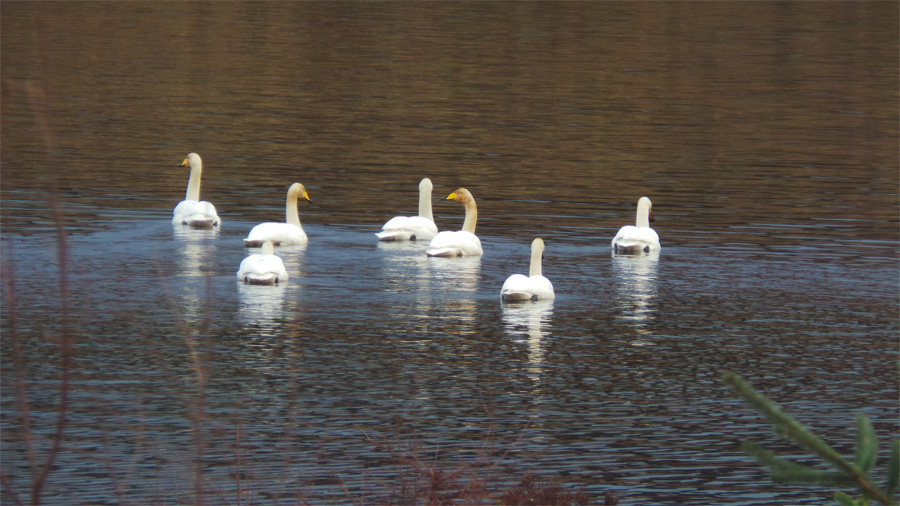
Photos: J Smith
April 2014
Male red deer use their antlers for fighting and display during the mating season - the 'rut'. Whether damaged or not, the more mature stags tend to shed their antlers towards the end of March and some have already done so, but younger animals will shed theirs in April. New antlers will grow and will be fully formed and ready for battle before the rut the following autumn.
